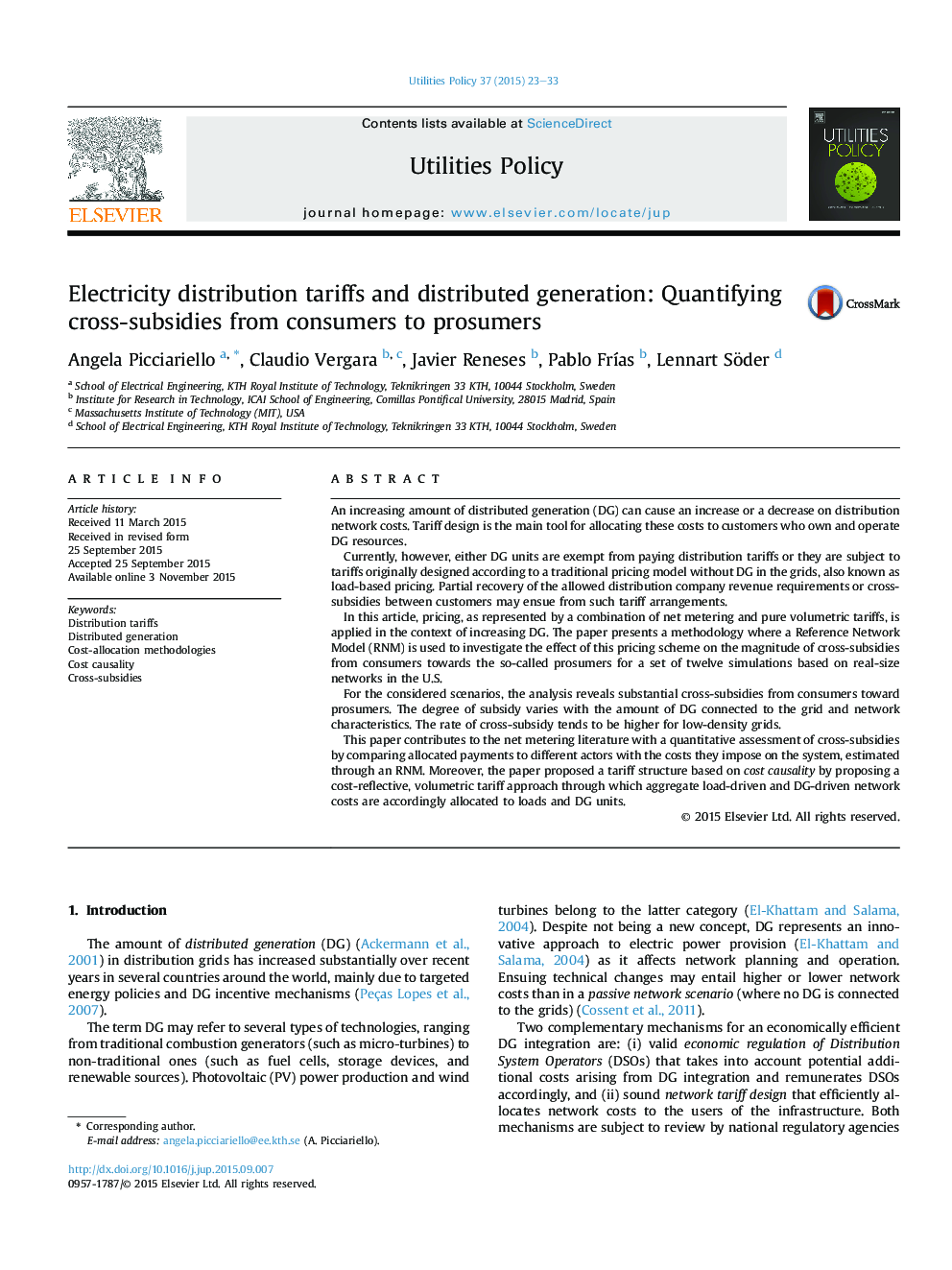| Article ID | Journal | Published Year | Pages | File Type |
|---|---|---|---|---|
| 999932 | Utilities Policy | 2015 | 11 Pages |
•Distributed generation (DG) may cause network cost increase or decrease than in a grid with no DG connected.•The drivers behind network costs should be identified in order to design cost reflective tariffs.•The combination of annual net metering and volumetric tariffs is investigated in detail.•Cross-subsidies from consumers to prosumers are defined and quantitatively estimated.
An increasing amount of distributed generation (DG) can cause an increase or a decrease on distribution network costs. Tariff design is the main tool for allocating these costs to customers who own and operate DG resources.Currently, however, either DG units are exempt from paying distribution tariffs or they are subject to tariffs originally designed according to a traditional pricing model without DG in the grids, also known as load-based pricing. Partial recovery of the allowed distribution company revenue requirements or cross-subsidies between customers may ensue from such tariff arrangements.In this article, pricing, as represented by a combination of net metering and pure volumetric tariffs, is applied in the context of increasing DG. The paper presents a methodology where a Reference Network Model (RNM) is used to investigate the effect of this pricing scheme on the magnitude of cross-subsidies from consumers towards the so-called prosumers for a set of twelve simulations based on real-size networks in the U.S.For the considered scenarios, the analysis reveals substantial cross-subsidies from consumers toward prosumers. The degree of subsidy varies with the amount of DG connected to the grid and network characteristics. The rate of cross-subsidy tends to be higher for low-density grids.This paper contributes to the net metering literature with a quantitative assessment of cross-subsidies by comparing allocated payments to different actors with the costs they impose on the system, estimated through an RNM. Moreover, the paper proposed a tariff structure based on cost causality by proposing a cost-reflective, volumetric tariff approach through which aggregate load-driven and DG-driven network costs are accordingly allocated to loads and DG units.
